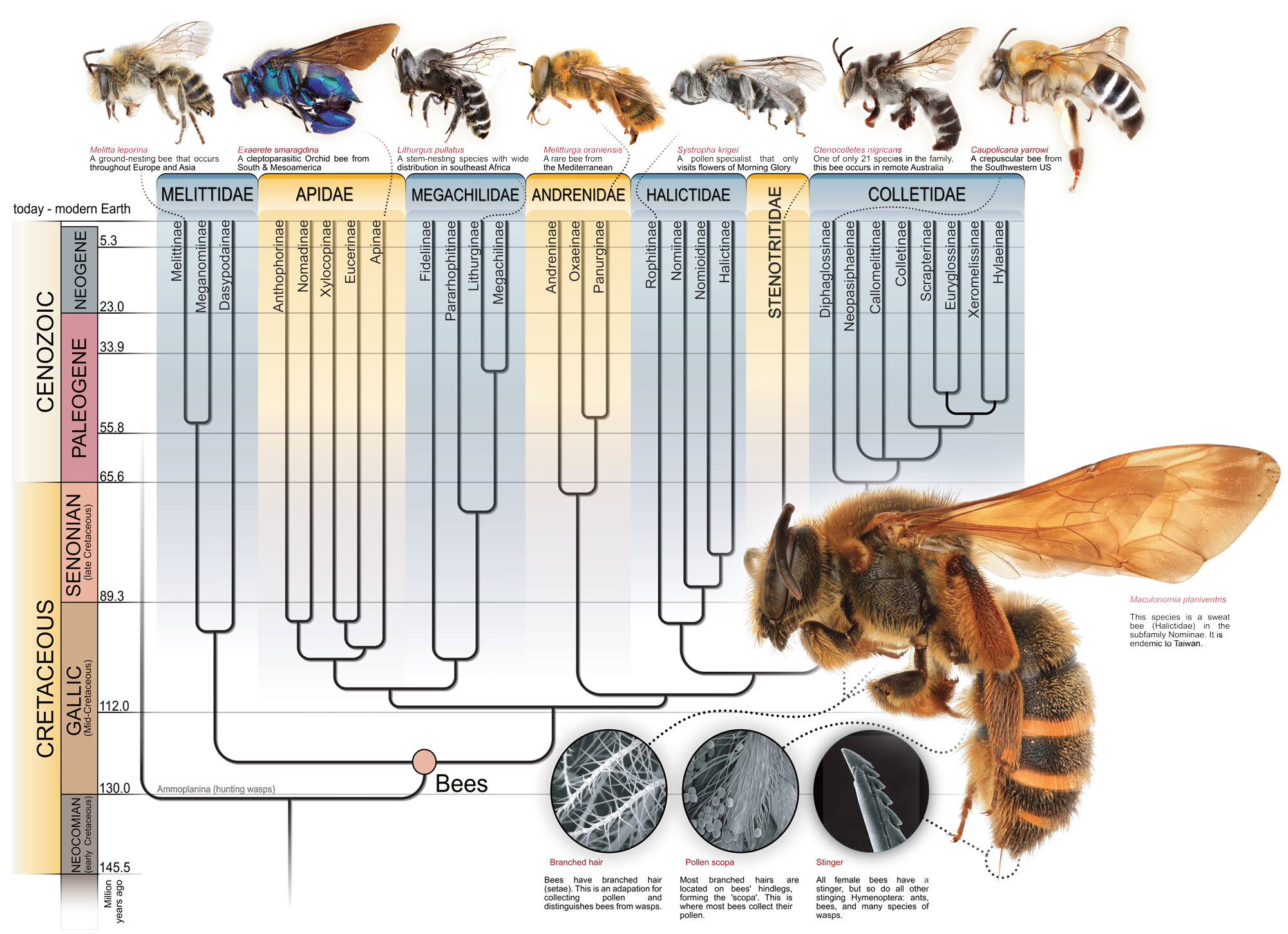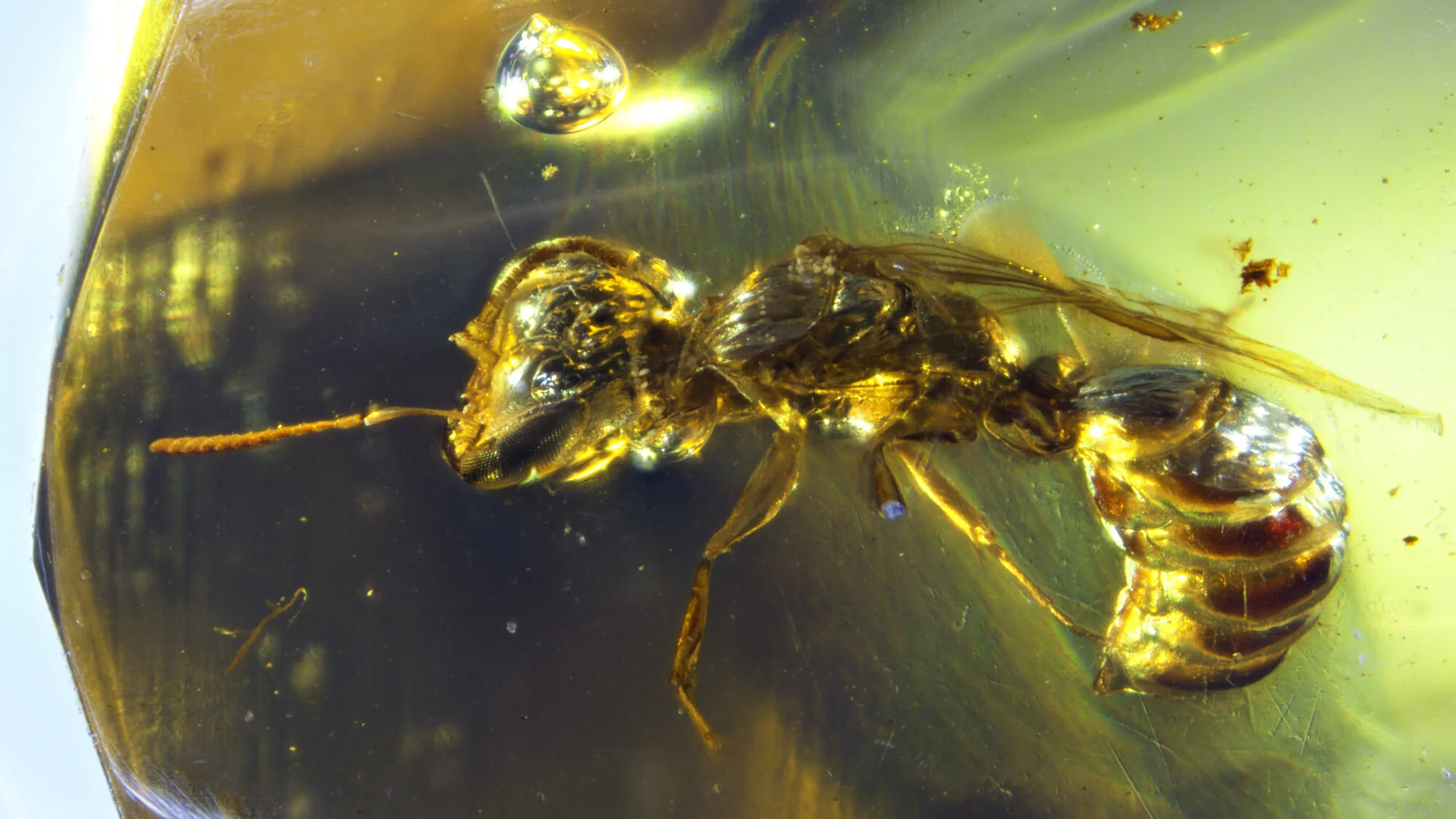Evolution & Fossil Record of Bees
Where did bees come from?
Bees evolved from ancient predatory wasps that lived 120 million years ago. Like bees, these wasps built and defended their nests, and gathered food for their offspring. But while most bees feed on flowers, their wasp ancestors were carnivorous. They stung and paralyzed other insects, bringing them back to feed developing offspring in the nest.
Phylogenetic relationships of the seven families of bees. Hunting wasps (Ammoplanina) are the closest living relatives of bees.
Major events in the fossil record of bees
Much of what we know about the fossil record of bees comes from specimens that are preserved in amber, a semi-precious gemstone that is actually fossilized tree resin. Resin is produced by some trees when they are injured. Some ancient organisms (especially bugs) became stuck in this resin before it hardened, entombing them in exquisite detail.
Sweat bees (family Halictidae) preserved in amber. Typically, sweat bees feed on nectar and pollen. Left: Nesagapostemon moronei (Miocene, Dominican Republic). Right: Oligochlora semirugosa (Miocene, Dominican Republic). Credits: Nesagapostemon moronei, MACT-1172, holotype, and Oligochlora semirugosa, KU-DR-21, holotype (Michael S. Engel, via Wikimedia Commons, CC BY 3.0). Specimens published by Engel (2009) ZooKeys 29: 1-12. Images modified from originals; see Pollination page on the Digital Encyclopedia of Ancient Life by Elizabeth Hermsen.
The Late Cretaceous: Bees first evolve.
Pemphredonine wasp. This 100 million-year old wasp fossil (preserved in amber) from Myanmar is one of the closest relatives of bees.
Pemphredonine wasp in amber from Myanmar.
Melittosphex burmensis. A transitional form between hunting wasps and bees. This specimen is preserved in 100 million-year old amber from Myanmar.
Melittosphex burmensis preserved in 100 million-year old amber from Myanmar.
The Paleogene: Bees diversify, migrate, and thrive; eusociality evolves in honey bees and their relatives.
Melissites trigona. A social, stingless bee preserved in 42 million-year old Baltic amber.
Melissites trigona preserved in 42 million-year old Baltic amber.
Ctenoplectrella viridiceps. An extinct type of solitary mason bee from 42 million-year old Baltic amber.
The Neogene.
Oligochlora eickworti. A halictid bee preserved in amber.
Oligochlora eickworti, a halictid bee preserved in amber.
Apis nearctica. The oldest known North American honey bee, preserved as a carbonization on fine-grained rock.
Apis nearctica, the oldest known North American honey bee.
Nogueirapis silaceae. A stingless bee preserved in amber from Mexico.
Nogueirapis silaceae, a stingless bee preserved in amber from Mexico.











